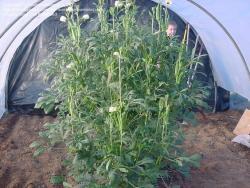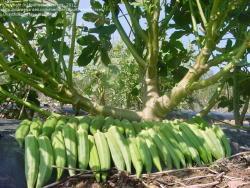Intheswamp said:... Since I'm wanting to grow plants that will "tune in" to my very local environment I may or may not maintain a "pure" variety, eh? That's ok, though, as long as I get some seed that produces plants that produce better in my local environment...soil, weather, insects, etc.,. ...
Excellent, in my opinion! Have you read any of what NGA member
@Joseph writes about starting with the MAXIMUM amount of genetic variety, and then letting them cross promiscuously in his field. His key practice is
severely weeding out failures. His climate is pretty extreme, so 80-95% of normal seeds won't sprout or will die before harvest-able.
Ahh, but that OTHER 5-20%!
Next year's seed comes from random pollination among last year's survivors.
(Mixed with some seeds from 2, 4, 7 and 12 years ago (I'm just making up numbers). That preserves genes that might otherwise get lost, but that assure SOME survivors when the climate and pests are no0t only severe, but DIFFERENT from their normal severity.)
He tried to develop a strain of something that NEVER would grow to maturity in his climate (maybe cantaloupes? some squash?)
The first year, he only got a few % of what he sowed to survive and make seeds.
Next year, he got a small harvest of less-than-ideal plants.
The year after that, his fruits were a huge success at his farmer's market.
And they kept improving.
If an entire culture, like the Mayans, do that for thousands of years, they get a "landrace" that is very well-adapted to their climate, but still the same species. The difference is in gene RATIOS of the whole population.
What Joseph and you (and I, eventually) are creating is like a mini-landrace. I also like the name "selectivar", because even if you TRY to avoid genetic drift, a population of things things grown in only one place tend to adapt to that place.
I suspect that professional seed companies maintain strains at a few locations with differing climates, and periodically combine seeds to keep the ratios of the whole population adapted to MANY regions. If they don't, my belief is that THEIR sub-strain of that variety necessarily drifts away from other vendors' strains of that variety.

